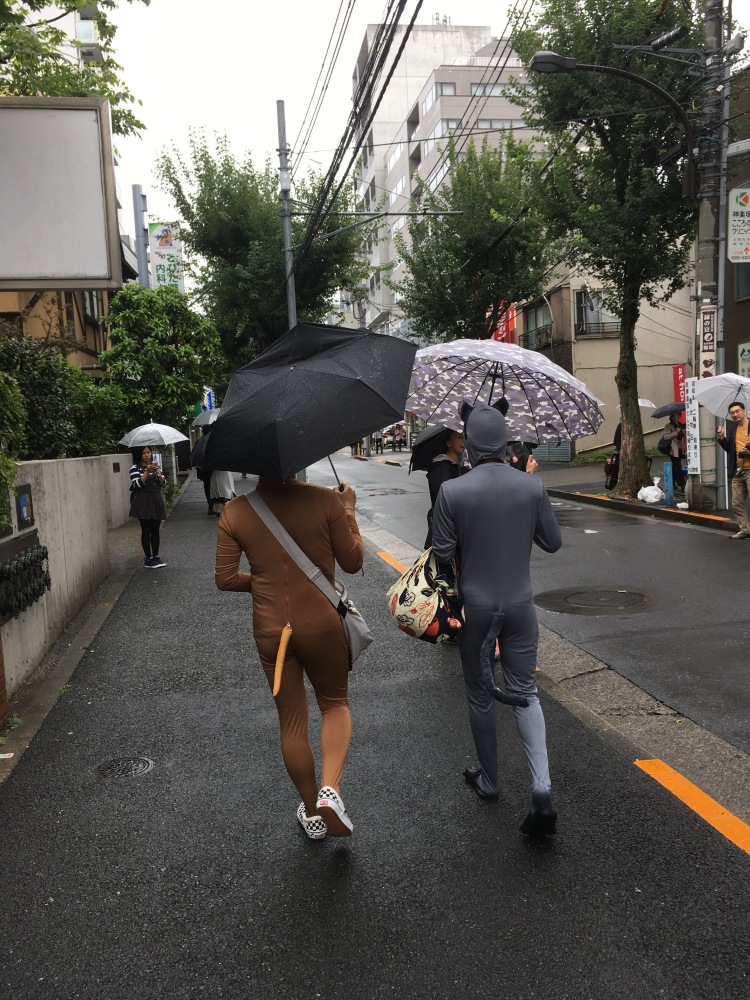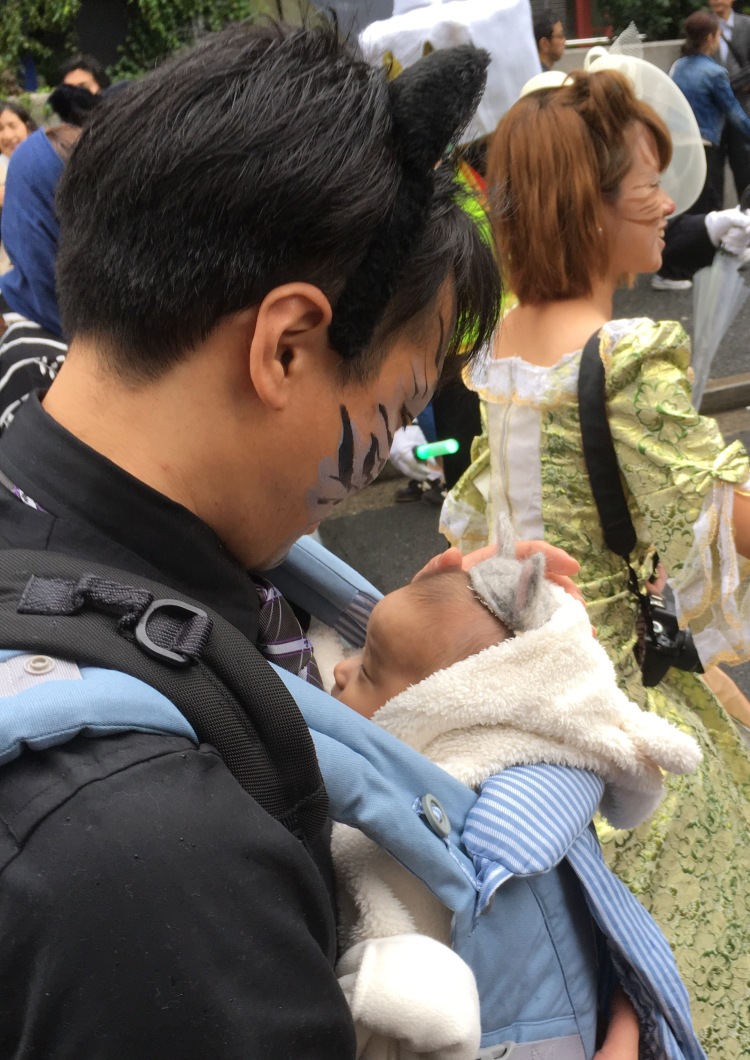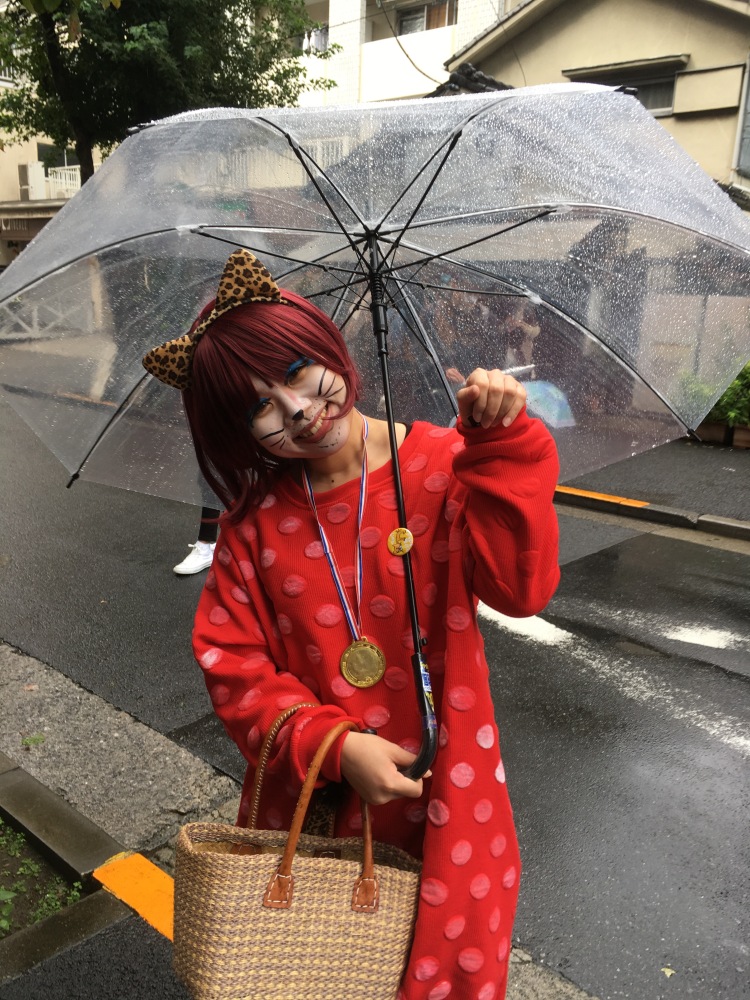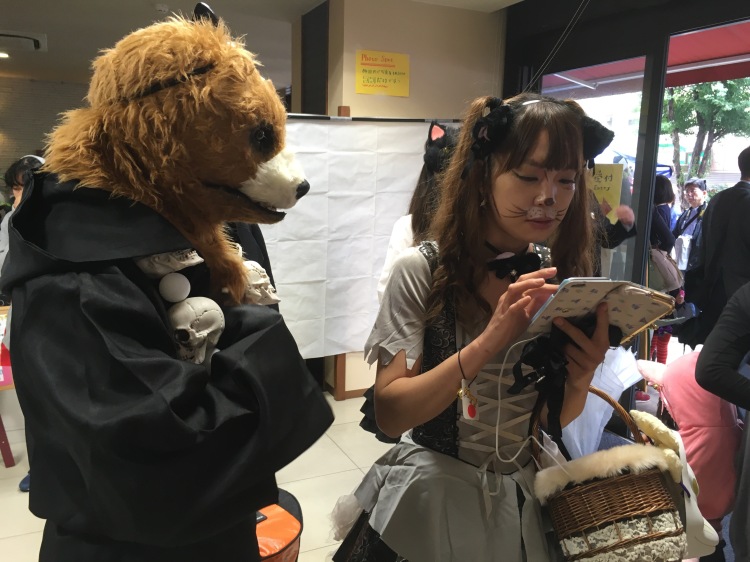Japanese Petting Zoo: Japan Loves Cats Part II
Have you ever been to a petting zoo? Petting zoos are awesome, right? You get to go and touch some kind of animal that you normally don’t see on the street. Like a baby pig (awww!!!) or a sheep (soooo cute!) or a goat (wait, why is it’s hair so coarse and ugly?). And probably, every time you go there, some farmer is like, “These idiots want to pay $10 per person to touch this ugly animal?! Bwa ha haaaa!” [Cash register sound] as said farmer deposits the money into the bank.
Well, in Japan people care a lot about gross germs (in that, they are bad) and probably don’t want to touch yucky farm animals the same way American suburbanites do. But as mentioned in Japan Loves Cats: Part I, Japanese people love cats. A lot.
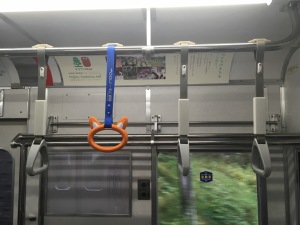
So much they get their own subway handles.

So much that grown people wear clothes like this.
Have you heard of a cat café? At this point, you probably have, since they are becoming popular worldwide. But, let it be known the trend started in Japan. (Well, I mean, by way of Taiwan, where it was invented. But Japan made it a craze.) After hearing all the Japanese cat café hype, I figured we had to come check it out. That was back in August. We happened upon a cat café one day as we were wandering Tokyo and figured, Why not? The answer to that is, “Because this is Japan and you don’t just pop into a cat café on a holiday in the middle of the day.” The wait list (let me repeat, so that sinks in: WAIT LIST. FOR A CAT CAFÉ.) was 30-45 minutes. A 30-45 minute wait list to pay money to play with cats. We bailed.
But this week is fall break, a gaping hole in the normalcy of life during which a desperate parent like myself considers things like “a full day at the new Legoland” or “visit a cat café”. Legoland sounds like a crazy far, crazy expensive, crazy crowded nightmare of a day, so I chose the cat café option.
When I mentioned our plan, my brother and sister-in-law kindly pointed out that if we wanted to pet cats we could simply go to basically any Middle Eastern country and hang out ANYWHERE for about 5 minutes, and have cats swarming us. In fact, we might actually get sick of cats. But that seemed ridiculous so I stuck with my plan of paying money to play with cats.
We started the day by hopping on the train towards Tokyo: me, a friend, and six children under nine. We are American, therefore we are loud. We blended into the Tokyo subway scene like a herd of elephants.
This little adventure was all my idea, and my friend, who was totally game for the fun (fun-slash-idiocy), is also new to the area. Basically this was a blind-leading-the-blind situation. Long story short, after accidentally leaving the subway from the wrong exit (which amounts to directional suicide), I used Google Maps to locate the café. We arrived with no problem and headed inside, despite my inner voice whispering, “This place looks different than the last time.” Once inside, a lovely employee welcomed us and asked our ages. Because I assumed this was to offer the smaller people free admission, I listed them all off: “Four, five, six, six, seven, nine.” “Oh,” she replied, “Sorry. Only 13 and over. But there is a cat café down the street that welcomes children.”
- There are two cat cafes one block from each other.
- There is a cat café that is ONLY FOR ADULTS.
Being an ignorant foreigner, I assumed all cat cafes were built and purposed for children. Who else would care at all for cats so much they would pay to go visit them?!
Our elephant herd trouped down the street to the next café. Where we were greeted with a sign saying that they would not open until noon due to a special event. That meant we had an hour and a half to kill: two adults and six kinds under nine in the big city.

Why do you have to ruin me, cat people??
Fortunately, this is Japan. So we bought some tomato-flavored stick crackers and took a short walk to visit a super-famous gorgeous shrine that is about a million years old. In Japan, it is very easy to find convenience stores with delicious and unfamiliar snack food products, and also beautiful old shrines in every neighborhood. It’s like being in Portland and finding microbreweries and vegan mini malls.

I got to carry on with my kimono-stalking.
After a quick visit to the temple, we tromped back to the café and up to the second floor, just in time for opening. Being the first people in the door, we raised the noise level quite a bit. Have you ever traveled with six kids?! Pretty sure six kids raise the noise level wherever they go.
We were read the rules, verbally agreed to follow them (clearly not an American café, where fear of litigation means we need to physically sign everything), and locked our belongings in the lockers provided.
For only 200円($2) per person per TEN MINUTES, you can pet and hang with the slew of cats. Keep in mind, this is $2 per PERSON per 10 minutes. And they docked us time for shoe-removal. AND we were 8 people.
The cats were beautiful. The softest, prettiest, most inbred cats you’ve ever seen. They all seemed so low-key, in fact, that I couldn’t help but feel they were either Stepford Cats or else seriously drugged. One of them looked longingly out the window, plotting his escape, but then slowly hung his head and sprawled out to be petted. We were only too happy to oblige. (It occurs to me that maybe every cat I’ve ever met seemed seriously drugged. Maybe that’s a cat thing.)

Cat cafe decor.


Please let me out. Do you not see me trapped up here?!
We petted cats and tried to engage them with cat toys (with medium success). And then, at exactly 19 minutes, I hustled everyone out for fear of being charged for another 10-minute block. I’m guessing the children would have stayed all day, or at the very least another 20 minutes (which, as the parent of a kid on fall break, feels like eternity), without complaining.
As we sanitized our hands and walked out the door, I could hear the owner of the cat cafe owners saying to each other, “These idiots want to pay $10 per person to touch cats?! Bwa ha haaaa!” [Cash register sound] as they deposited our money into the bank.
I guess Japan and America are kind of alike, after all.











